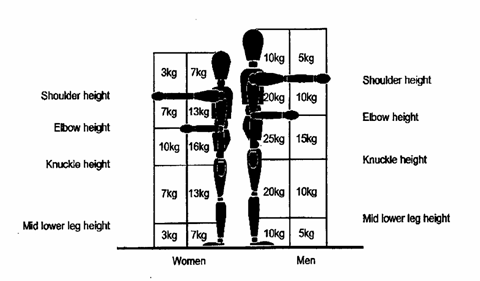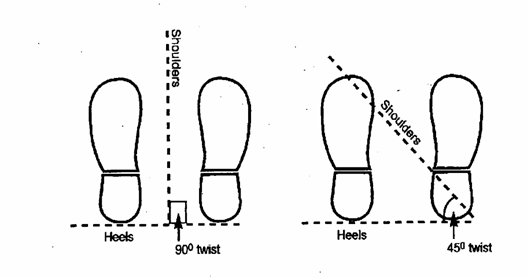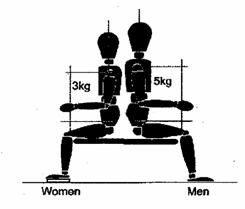The Management of Health and Safety at Work Regulations, makes it a requirement that where there is a risk to the health and safety of employees while at work, that the risks must be sufficiently assessed by the employer.
The Manual Handling Regulations set out measures that should lead to safety during manual handling, and should be considered in this order:-
- avoid hazardous manual handling operations so far as is reasonably practicable.
- make a suitable and sufficient assessment of any hazardous manual handling operations that cannot be avoided, and
- reduce the risk of injury from these operations so far as is reasonably practicable.
To assess every manual task would involve a major undertaking and could involve wasted effort.
Section A of the assessment form, appendix C, provides some filter arrangement, and will help to identify the tasks that demand more detailed assessment, to be carried out in section B in which, the assessments should be based on the following factors, where the levels of risk are ranked high, medium or low.
| Factors | Questions |
1 The tasks
| Do they involve:- holding or manipulating loads at distance from trunk?
- unsatisfactory bodily movement or posture, especially:
- twisting the trunk?
- stooping?
- reaching upwards?
- excessive movement of loads, especially:
- excessive lifting or lowering distances?
- excessive carrying distances?
- excessive pushing or pulling of loads?
- risk of sudden movement of loads?
- frequent or prolonged physical effort?
- insufficient rest or recovery periods?
- a rate of work imposed by a process?
|
2 The loads
| Are they:- heavy?
- bulky or unwieldy?
- difficult to grasp?
- unstable, or with contents likely to shift?
- sharp, hot or otherwise potentially damaging?
|
3 The working environment
| Are there:- space constraints preventing good posture?
- uneven, slippery or unstable floors?
- variations in level of floors or work surfaces?
- variations in level of floors or work surfaces?
- extremes of temperature or humidity?
- conditions causing ventilation problems or gusts of wind?
- poor lighting conditions? capability
|
4 Individual capability
| Does the job:- require unusual strength, height, etc?
- create a hazard to those who might reasonably be considered to be pregnant or to have a health problem?
- require special information or training
- for its safe performance?
|
5 Other factors
| Is movement or posture hindered by personal protective equipment or by clothing?
|
When risks have been identified as being high or medium, remedial actions will need to be identified in order to reduce the risk to an acceptable level. Measures may include such actions as the use of tools such as trolleys, reducing the size of the load, sharing the task with others or changing the layout of the workplace. The notes below will help with the assessment of hazard levels and give guidance on remedial actions to be taken.



